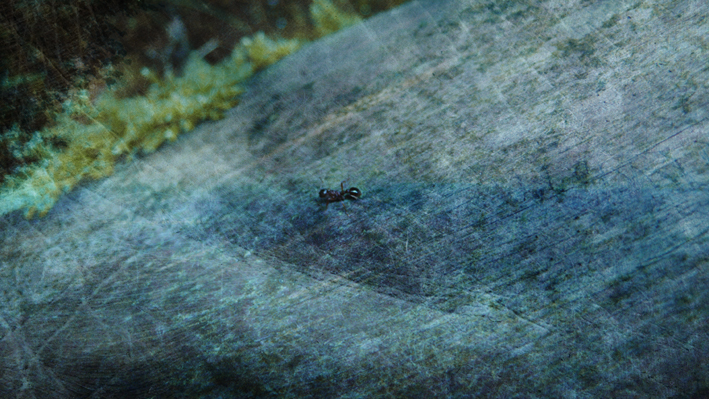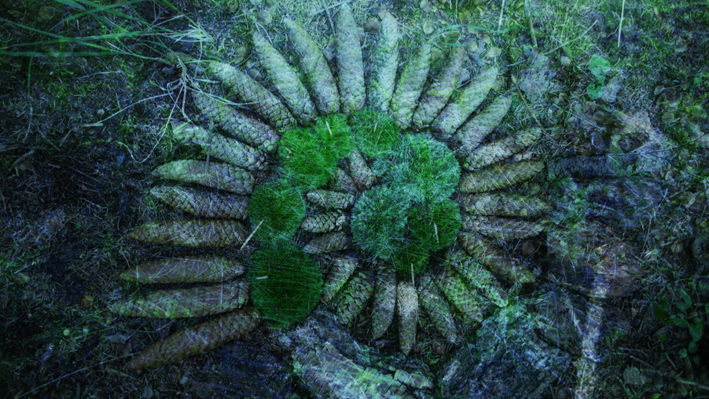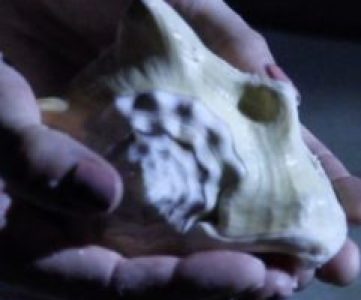Awakening of a Place
TT Journal, ISSUE 4, 12th September 2022
By Václav Cílek
A place is a place in the heart, it is a relationship.
More than thirty years ago – I am almost afraid to write that number, that’s how long it is – I started to wander across Bohemia. In those days I was actively gathering minerals. A strong desire to find and possess took me to small quarries and later into old galleries. I don’t want to describe here experiences that on a couple of occasions nearly ended with death. It was a heroic era, and today I believe its aim was to learn to work in tandem with earth. When collecting minerals you receive an immediate feedback – if you half intuitively, half from experience discover a new or long forgotten locality, the finding itself lets you know how well you work with nature.
For ten years I was digging in caves. At last I didn’t need to own stones, I was surrounded by the element of earth. Looking for new underground spaces is even more testing on knowledge and feeling than looking for stones. You get familiarised with clay. Looking back now on those years, I have a strong and not at all unpleasant sensation of wandering in underground empires, feeling the rough touch of rocks and work with earth. And again I do not want to speak of experiences, but instead with wonder to contemplate the places that I visited or worked in, in those days, and which I did not understand – for instance the Abyss of the Dead on Tobolsky Vrch, from which human victims were thrown. Lack of understanding is what marks all these years, but luckily experience, although forgotten, remains.
In those days I visited many villages, many ups and many downs, places where normally one has no reason to go. I am not sure if this applies to everybody, but I need to work in a place, physically touch it, make a certain effort, in order to start to understand. I cannot just arrive and at once feel myself part of the location. I must do something and only in the evening after work, when I look around, it becomes clearer to me where I am. Usually this realisation comes through the clay, the rock, or the earth itself. It is neither a quick-witted thought nor an all-encompassing mediation, it smells of the earth and opens up to you, but more often it does not. I am patient. I do not need to arrive, understand, gain an experience, insight. I am a pilgrim, not a conqueror. I do not enter doors that are closed, I do not own a treasure box with a stolen secret.
For the last ten years or so I have constantly walked through sacred paces, ancient castle sites, cloisters, roman churches, rocks of strange shapes, ritual caves and sand stone overhangs with sacrificial sites almost ten thousand years old. There were times when I wanted to write a book about these places, because I sensed all that they gave me. Now I do not wish to own stones, to discover caves and write a book about sacred places. They are here, many of them can easily be found – it is enough to read a notice on the other side of a tourist map. It took me twenty years, damaged knees and a sore back, until I got closer to the secret, the essence of a place. You too can do it, I leave traces but I do not mark the path for others. My sight is not sharp and I do not want to confuse anyone. I do not gather, I prefer to forget, so that in the mind there remains a space for things, which are still to come. I saw more than I will be able to understand to the end of my life.
That time under Silbury I begun (for myself only) to compose the ‘pilgrim’s rules’. I finished them two years later amongst the Elbe sandstone, then forgot. Here they are – and they do not want to be taken too seriously, because the essence of a place, just as a human being and their essence, cannot be fitted into a single schemata.

The Rule of Home
A person is at home in a landscape, some people can encompass two or three landscapes, but no more. A small landmark of a place where we feel at home is more important than a more significant landmark of a different landscape. But despite that, we need to travel abroad – for comparison, for the recognition of the smallness of home, and the realisation of where we belong.
The Rule of Resonance
A smaller place with which we resonate is more important then a great place of pilgrimage, where one is only a visitor.
The Rule of Irreplaceability
There are places that cannot be replaced by other places. In our country these are for example Vyšehrad, Velehrad and Říp. There are irreplaceable cities like Znojmo or Prague.
The Rule of Breezing
The spirit breezes, where it pleases, but it prefers some places over others. Rarely does the ‘soul within us’ sense the ‘soul without us’. We are not angels, we need a material mediator – a place or an object. These deserve respect, but even greater respect belongs to those who move them.
The Rule of Various Viewpoints
One perceives the beauty of a place, the other myth or poetry, another understands the charge and flow of energies. None of these ways is superior to any of the others. Many say they know where and how the hidden force passes – but that is often only the knowledge of a technician, who knows how a ‘thing’ is made, where the wires lead, without perceiving equally important (or more important) aspects. Few people are able to listen to more than one muse.
The Rule of a Lid
Some places, or even whole landscapes, are open and friendly. Others are hidden under a lid – closed or injured and suffering. Deeper, perhaps, there is a crooked, but nonetheless beautiful inner life. An example: greater parts of the Krušné mountains and Sudetenland in general. There are landscapes such as Český Kras, whose being escapes, hiding in artesian rivers and only rarely rising to the surface. You can live in them for years, and never glimpse it.
The Rule of Return
Just as between people there exists love at first sight, so there exists one between a person and a place. Usually though it is necessary to keep returning, to observe, and to grow intimate with the place. Truly powerful places only open for a few hours in the whole year. One needs to come to them at different times of the day and year. Suitable are moments when vision loses clear sense of scale – in fog and in the dark. Certain places (and certain truths), only reveal themselves when they are not clearly visible. An experience from Avebury: a force like a giant mole is slowly finding its way to the surface and then it curls back into depth and the unknown. I never caught it again.
The Rule of Slow Approaching
The thought that you can arrive by a car, stay for a while and understand, is in most places merely an illusion. Some places are shy, other places behave like a chief executive director – they accept you, but you will need to wait. I know of one place (I am sure there are many, but I didn’t have enough time for them), where it is necessary to approach them for three days. We never arrive to unknown sacred spaces directly, it is much better to walk slowly, to hesitate, to circle the place first and only then to approach. An unknown place is not only one that we do not know, but also one which doesn’t know us. Some places demand a great respect, but sometimes respect is in the way, and we achieve more with a smile.
The Rule of Friendly Teasing
If we want to get to know a certain place, it is necessary to vary an active and passive approach. In the active part of the approach one prompts a place with the question: Who are you, please? And after that usually nothing happens, the place lives in a different temporal scale than the human one. Sometimes a reply follows. Quick replies are usually misleading.
The Rule of Sacred Games
There are places or lines where strange things happen and sensitive people perceive unusual images. In many cases these apparitions correspond to real events and deserve a proper attention. There are many playful places or those endowed with a strange (sometimes almost malicious) humour, that produce images which should not be interpreted.
The Rule of Culmination
A place, which is also a being, matures and grows. It can have several prehistoric meanings, later a Christian soul and today perhaps a deeply ecological significance. In places there is usually something of nature and something from people. Something relatively constant, but also something changing, which addresses each historical period in its unique way. Certain lazy and messy or enchanted places confuse times or even sleep through whole eras and then awake into a period in which they are disorientated. Some places, in a manner similar to local magnetic fields, move several tens of meters over centuries, and constantly, or in alternations, weaken.
The Rule of Reciprocal Awakening
By journeying to places we awaken and reinvigorate the earth, which reciprocates. A place within a landscape corresponds to a place within the heart.
If it wasn’t for this last rule, I might have not written this message. But a land that is awakening longs to be visited. Repeatedly I see how places in Bohemia are rusty and unused. But they are starting to move. The number of quiet pilgrims is rising. On stones and in forests one comes across small offerings – a posy from wheat, a feather in a bunch of heather and a circle from snail shells.
My message is simple: the gods of the earth are awakening, the time of change is here, I say to myself with joy and apprehension.
END.

Václav Cílek (b. 1955) is a Czech geologist, climatologist, writer, philosopher, and populariser of science. He graduated from the Mining Institute and Faculty of Natural Science of Charles University, and became involved in the study of hydrothermal deposits. Later, he studied samples brought from the Moon by Russian satellites. Thirty years ago, he began to focus on climate change and environmental issues. He combines a knowledge of the humanities with the natural sciences. He is the author of around 400 scientific articles and several books, including the award-winning Inscapes and Landscapes and Makom Book of Places. He was awarded the Tom Stoppard Prize (2004) for his essay work and the Václav Havel Foundation Vize 97 Prize in 2009.
*
The essay ‘Včely Neviditelného – Probouzení místa‘, which was published in its Czech original in a book called Krajiny Vnitřní a Vnější, 2002.
The English translation of the article was originally published in Artesian journal, 2008
Images and translation by Tereza Stehlíková
*
You can read further essays by Václav Cílek in Tangible Territory journal (issue n. 1 and 2)
